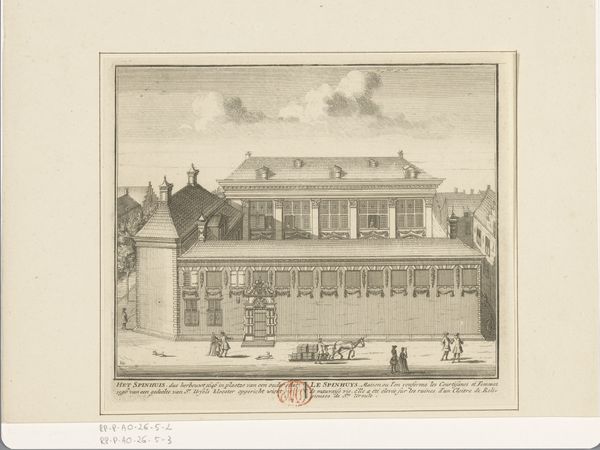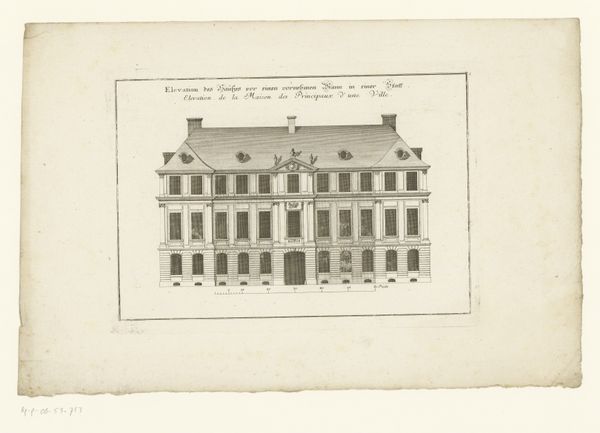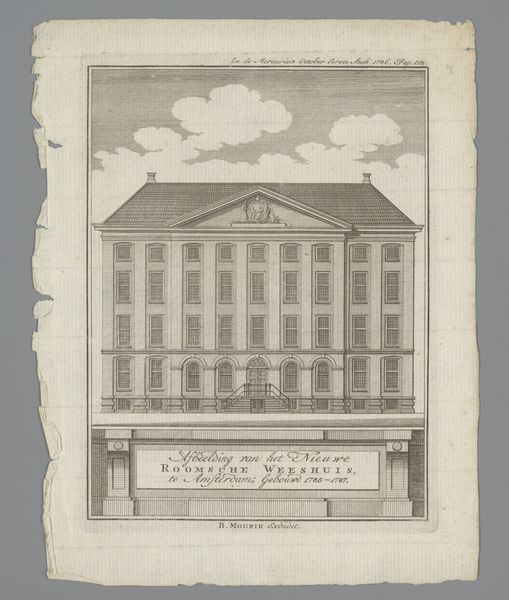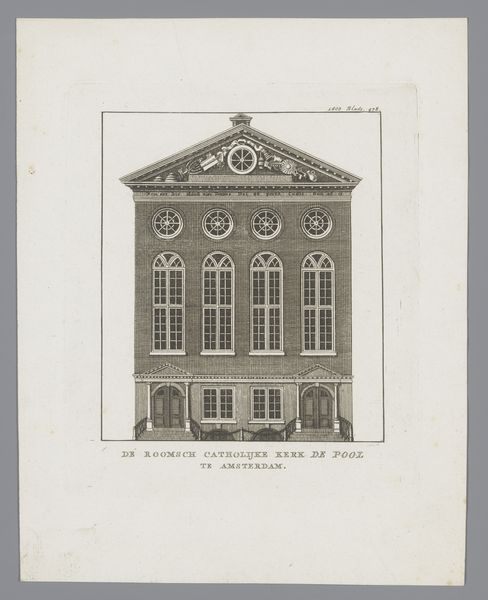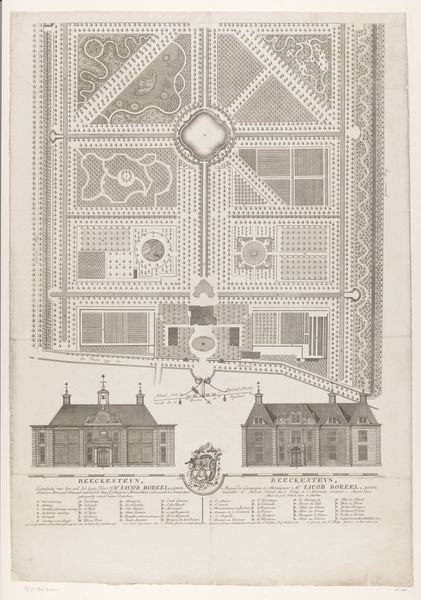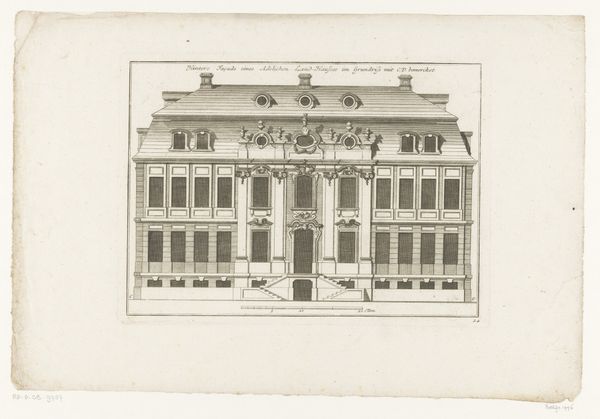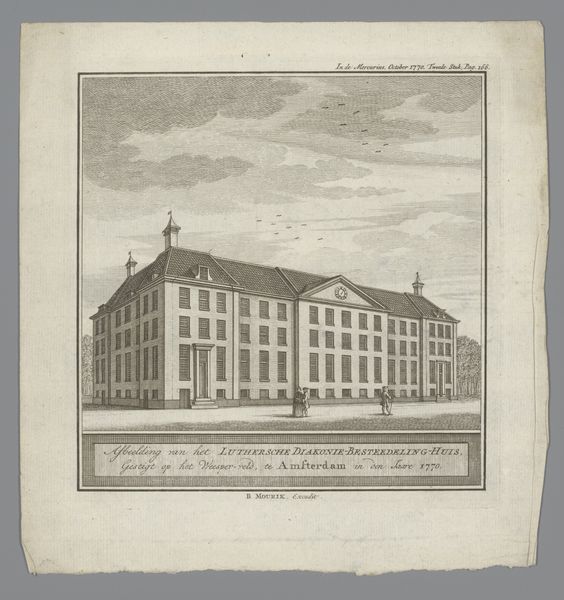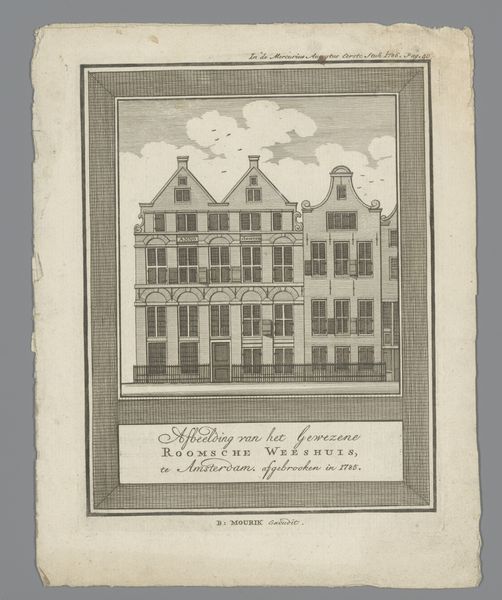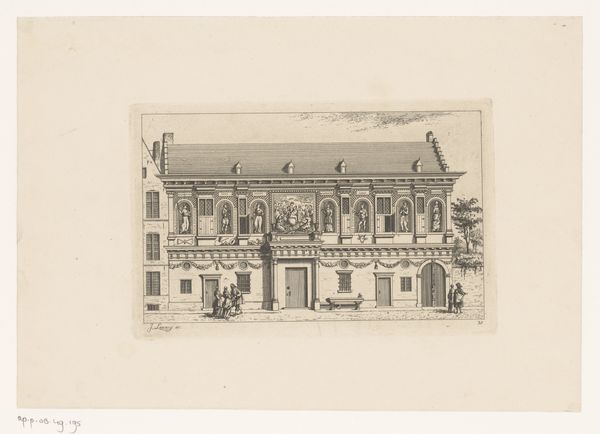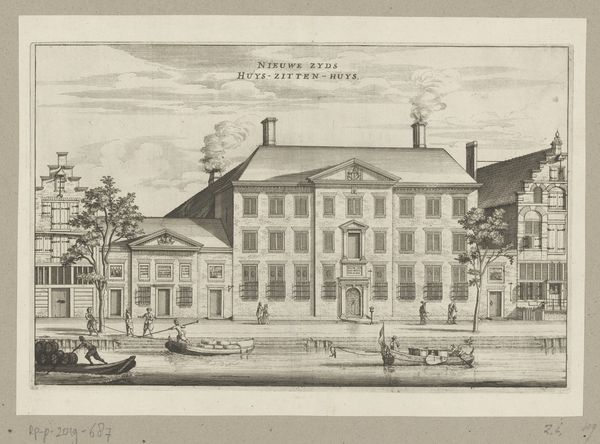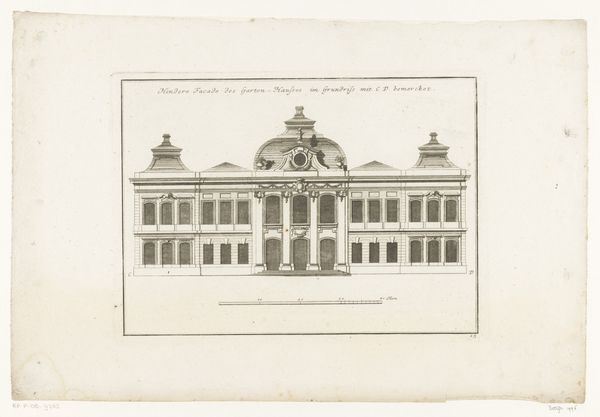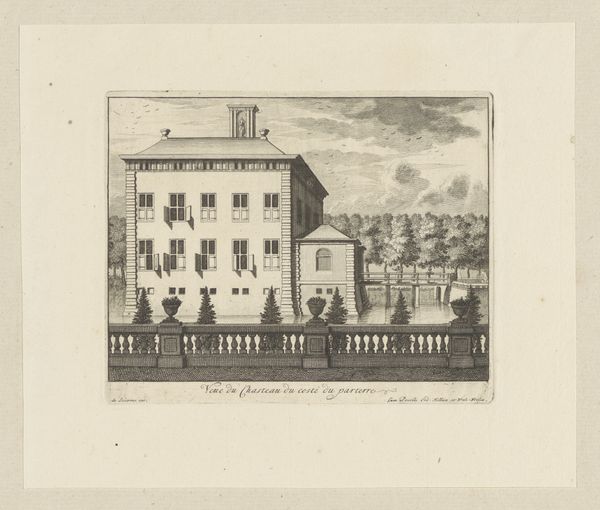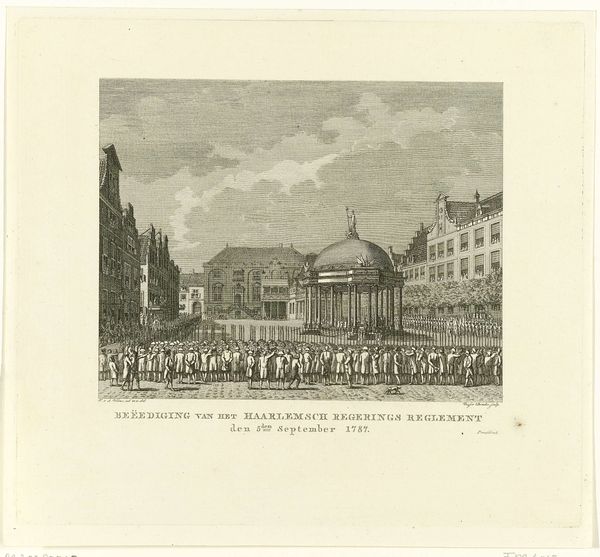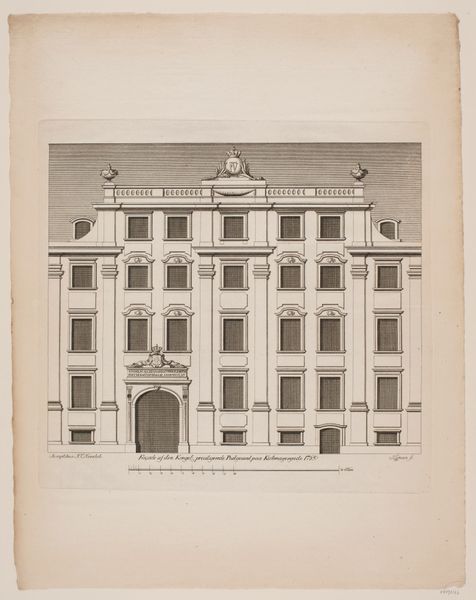
Gezicht op het Korenmetershuis aan de Nieuwezijds Kolk te Amsterdam 1797
0:00
0:00
drawing, print, graphite, engraving, architecture
#
drawing
#
dutch-golden-age
# print
#
old engraving style
#
19th century
#
graphite
#
cityscape
#
engraving
#
architecture
Dimensions: height 163 mm, width 131 mm
Copyright: Rijks Museum: Open Domain
Editor: Here we have Johan Christoffel Schultz's "Gezicht op het Korenmetershuis aan de Nieuwezijds Kolk te Amsterdam," created in 1797. It’s an engraving, so the detail is quite crisp, but the mood strikes me as somewhat austere, almost like a portrait of a very serious building. What do you see in this piece? Curator: I see a fascinating dialogue between public function and civic pride. The Korenmetershuis, or Grain Measurers' House, wasn’t just any building; it was a place of crucial economic activity. The façade, rendered with such meticulous detail, isn’t just about architectural accuracy. The symbols and imagery, think about the weighing scales prominently displayed, convey trustworthiness and fairness in trade, essential values for Amsterdam at that time. How does this almost idealized representation of the building impact your reading of the space, knowing its function? Editor: It makes me wonder about the people who worked there, did they see this building the same way? Or did they just see it as their office? Curator: That's a pertinent question! It prompts us to think about the intended audience and the layers of meaning embedded. The print likely circulated amongst merchants, civic leaders, and perhaps even prospective traders. It serves as a visual shorthand, reminding them of the city’s commitment to just practices and, dare I say, inviting trust. It's a blend of propaganda and pride, wouldn’t you agree? Editor: Yes, I think so. I had only been thinking of the building, but the symbols do invite us to see the values it represents. Curator: Precisely! And that intersection, the architecture speaking to underlying social structures, that is a space ripe for deeper interpretation. I find that very interesting about Schultz’s choice. Editor: Me too. I'll definitely be more aware of the symbolic layer of buildings when looking at cityscapes from now on.
Comments
No comments
Be the first to comment and join the conversation on the ultimate creative platform.
